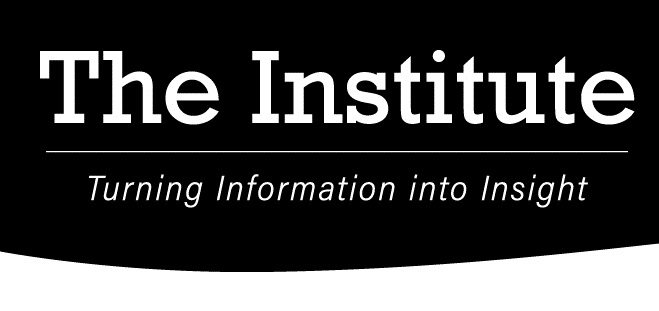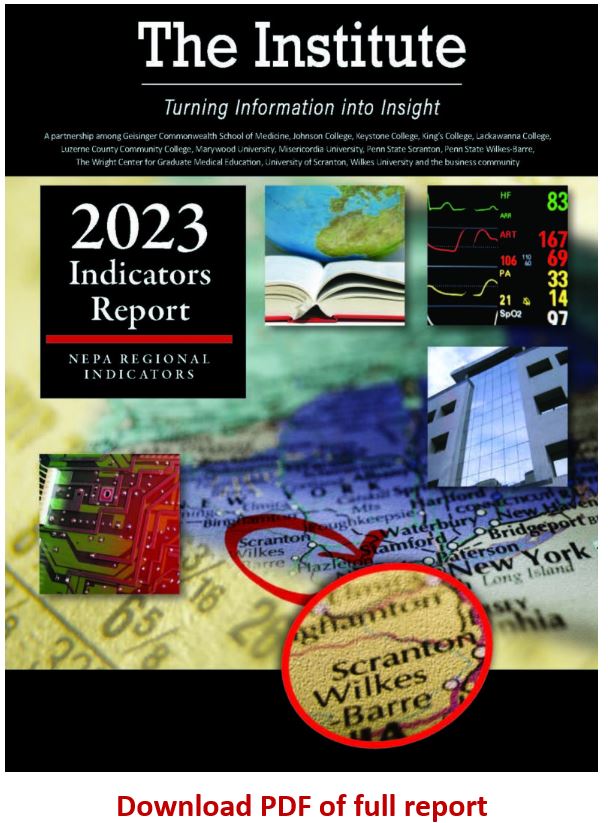Thank You
Thank you to the following organizations for their continued support of our research and this Data Dashboard, which is part of Project STIR (Sparking Transformation using Information & Research).
Recycling
The most recent statewide statistics on recycled materials are from 2020. At that time, recycled tonnage varied significantly in the counties. The total tonnage of Lackawanna County’s recycled material, as a percentage of the statewide total, spiked in 2014 and remained disproportionately high for several years. It accounted for about 30 percent of all recycled materials statewide in 2015 and 2016, 11 percent in 2017, and just under one percent in 2020. In 2014, DEP attributed this anomaly to large amounts of materials recycled from the University of Scranton’s demolition of the former YWCA building and construction of Leahy Hall. Luzerne County has accounted for an average of two to three percent of the total statewide tonnage, roughly approximating its share of the statewide population. Wayne County has consistently accounted for less than one percent of the state’s total recycled materials and as of 2020 accounted for 0.06 percent of the state’s total recycled materials. This share has trended downward since 2011.
Generation of single-stream recycled materials increased in Lackawanna and Luzerne Counties as well as the Commonwealth between 2015 and 2016, before leveling off in recent years. Both Lackawanna and Luzerne County saw a decline in residential single stream recycling in 2020. Wayne County’s total recycled tonnage declined in 2020 though tonnage of glass increased. Total recycling significantly dropped statewide in both 2019 and 2020.
Lackawanna Residential Recycling for Selected Materials
Source: Pennsylvania Department of Environmental Protection
Luzerne Residential Recycling for Selected Materials
Source: Pennsylvania Department of Environmental Protection
Wayne Residential Recycling for Selected Materials
Source: Pennsylvania Department of Environmental Protection
Pennsylvania Residential Recycling for Selected Materials
Source: Pennsylvania Department of Environmental Protection
Waste Facilities
Lackawanna County generated just over 322,000 tons of waste in 2022 – a decrease of 6.8 percent from the prior year. Luzerne County generated over 340,000 tons – an increase of about six percent from 2021. Wayne County generated nearly 26,000 tons of waste – a significant decrease of just over 15 percent from 2021. Pennsylvania overall saw a 1.2 percent reduction in tonnage of total waste. In 2022, Lackawanna County recorded increases in the residual, medical, and other waste categories, which comprise a relatively small share of total waste compared to municipal waste. Municipal waste declined considerably. Luzerne County saw an increase in municipal, residual, sewage sludge, and construction waste. Wayne County saw an increase in construction waste but declines in the other categories.
Total Waste by Type: 2022 (In Tons)
Source: Pennsylvania Department of Environmental Protection
Total Waste by County (In Tons)
Source: Pennsylvania Department of Environmental Protection
Brownfields
Updated data for 2022 was not available for this year’s report. As of 2021, six Lackawanna County sites were listed in Pennsylvania DEP’s Hazardous Sites Cleanup Act (HSCA). Five additional Lackawanna County sites are listed under the federal CERCLA program – the Comprehensive Environmental Response, Compensation, and Liability Act (commonly known as Superfund). Luzerne County had 16 HSCA sites and six federal Superfund sites as of 2021. Both counties’ total numbers of sites were unchanged from 2020. As of 2021, Wayne County has three HSCA sites and zero Superfund sites. According to DEP, most of these sites involve facilities with bankrupt owners, abandoned facilities, and facilities where hazardous materials have been improperly disposed.
Environmental Cleanup and Brownfield Sites: Lackawanna County
Source: PA Department of Environmental Protection
Environmental Cleanup and Brownfield Sites: Luzerne County
Source: PA Department of Environmental Protection
Environmental Cleanup and Brownfield Sites: Wayne County
Source: PA Department of Environmental Protection
Abandoned Mine Reclamation
Abandoned mine lands (AMLs) refer to any of the 250,000 acres of mine lands left abandoned across Pennsylvania. There are AMLs in 43 of the Commonwealth’s 67 counties. Luzerne, Lackawanna, and Wayne Counties together are home to 7.5 percent of the state’s 5,617 abandoned mine lands, with a total of 421 sites between the three counties. As of the most recent report in 2013, there were 165 sites in Lackawanna County, 247 in Luzerne County, and nine sites in Wayne County.
The Abandoned Mine Land Economic Revitalization (AMLER) program, formerly known as the AML Pilot Program, provides funds for the reclamation of AMLs in conjunction with economic and community development and reuse goals. The sites could be former mines, coal refuse areas, areas with acid mine drainage, and more. For each of the last five years except 2019, there has been at least one project in the three-county area. Three sites were funded in 2020, all of which were located in Luzerne County. Over the past five years, there were 14 projects across the three counties, representing about 21 percent of all funded projects statewide.
Coal refuse refers to any waste coal or other materials (such as shale, clay, or rock) that are brought above ground or removed from coal mines during mining activities. The term also refers to the leftover materials separated from coal during cleaning operations. Coal refuse sites are areas where such materials are disposed. As of 2021, there are eight reported refuse sites in Luzerne County – the lowest number since 2016. Lackawanna County has one refuse site, also the lowest since 2016. Wayne County does not have any anthracite coal refuse producing sites. There are 36 coal refuse sites in Pennsylvania. Lackawanna and Luzerne Counties have generally accounted for about 20 percent to 30 percent of statewide coal refuse sites.
Number of AML Sites
Source: PA Department of Environmental Protection
Air Quality
The Air Quality Index (AQI) reads five pollutants to assess the safety of the nation’s air quality. Those pollutants include ground level ozone (smog), particle pollution, carbon monoxide, sulfur dioxide, and nitrogen dioxide. The overall AQI is the highest AQI of any of the five individual pollutants. Scores of 0 to 50 are considered good air quality, 51 to 100 are considered moderate, 101 to 150 are considered unhealthy to sensitive groups, 151 to 200 are considered unhealthy to everyone, 201 to 200 are considered very unhealthy, and scores above 301 are considered hazardous for all people.
Monitoring stations in Lackawanna and Luzerne Counties have generally reported AQI ratings in the ‘Good’ range. AQI data changes daily and is available in real time from the Pennsylvania Department of Environmental Protection’s Bureau of Air Quality. Annual data, including the number of unhealthy air quality days and the median AQI for the calendar year, is collected from the U.S. Environmental Protection Agency. As of 2022, there were no monitoring stations in Wayne County.
Over the past several years, Lackawanna and Luzerne Counties have reported no unhealthy AQI days. The 2022 median AQI for Lackawanna County was 38, and it was 37 for Luzerne County. This represents a slight decline in quality for both Lackawanna and Luzerne Counties. They have remained in the ‘Good’ range for all years analyzed, however. AQI has improved by about 14 percent in Lackawanna County since 2000, while Luzerne County has improved by over 18 percent.
Air Quality Index (AQI): Median
Source: US Environmental Protection Agency Air Data
Water Quality
Stream water quality monitoring is conducted at several sites in the region. One site – the Susquehanna River at Wilkes-Barre, which is monitored by the Chesapeake Bay Program – has consistent and regular data necessary for inclusion in this report. The vast majority of Lackawanna and Luzerne Counties are within the Chesapeake Bay Watershed. Comparable data was not readily available for waterways in other portions of the region. Two key parameters of water quality (pH, which is commonly used to measure acidity in water, and total dissolved solids) were analyzed.
A pH of seven represents a neutral measurement. A value greater than seven indicates basic or alkaline conditions, and values less than seven indicate acidic conditions. The pH of natural waters is between 6.0 and 8.5. Any values less than 4.5 and above 9.5 tend to be severely damaging to ecosystems. The Susquehanna River tested at an average of 7.35 pH in the most recent year, or slightly more alkaline than neutral water. The average in 2021 is a decrease from the previous year’s average of 7.65.
The concentration of total dissolved solids (TDS) is a measure of the amount of dissolved materials in water. These materials include sodium, calcium, magnesium, and others. Fresh water usually has TDS levels between 0 and 1,000 mg/L, dependent on the geography and contributing factors in the region. Values over 500 mg/L are considered elevated and can be unsuitable for drinking or household use. Although TDS is not considered a primary pollutant, water with a high TDS concentration may indicate elevated levels of ions such as aluminum, arsenic, copper, lead, nitrate, and others that do pose health concerns. Since 2013, TDS levels in the Susquehanna River have consistently been below 200 mg/L, though in 2019 the average level was the highest since 2016. It dropped below 150 mg/L in 2020 and further fell to 132.7 in 2021.
Water Quality – Susquehanna River
Source: Chesapeake Bay Program








 Sarah, a former Institute intern, joined The Institute in April 2021 as a Research Assistant. She started her new role as a Research Analyst in January 2024.
Sarah, a former Institute intern, joined The Institute in April 2021 as a Research Assistant. She started her new role as a Research Analyst in January 2024. 

 Jill Avery-Stoss joined The Institute in June 2018 to fill the newly-created role of Research, Data, Intern & Administrative Coordinator. She assists with the collection and management of data for purposes of ethical and efficient analysis. She visits partner campuses to market The Institute’s internship opportunities, and participates in event-planning logistical activities as well. In 2021, Jill was promoted to Director of Operations to reflect the diversity in her job description and the additional marketing and communication functions she successfully mastered in 2020. In 2022, Jill was named Chief Operating Officer after expanding into both research and administrative management functions. Jill is taking on project management, fundraising, and other executive leadership functions of the organization.
Jill Avery-Stoss joined The Institute in June 2018 to fill the newly-created role of Research, Data, Intern & Administrative Coordinator. She assists with the collection and management of data for purposes of ethical and efficient analysis. She visits partner campuses to market The Institute’s internship opportunities, and participates in event-planning logistical activities as well. In 2021, Jill was promoted to Director of Operations to reflect the diversity in her job description and the additional marketing and communication functions she successfully mastered in 2020. In 2022, Jill was named Chief Operating Officer after expanding into both research and administrative management functions. Jill is taking on project management, fundraising, and other executive leadership functions of the organization. Ooms is responsible for all facets of research, organizational strategy, and management. Ooms is an active principal investigator in all Institute research. Ooms has been nationally recognized as a leader in regional economic development. She turned that skill into a research institute to help other regions develop and prosper. Her strategic skills have allowed The Institute to expand its services to the private and non-profit sectors for research and analysis in community health needs assessments, strategic planning, market and feasibility studies, and economic impact analysis.
Ooms is responsible for all facets of research, organizational strategy, and management. Ooms is an active principal investigator in all Institute research. Ooms has been nationally recognized as a leader in regional economic development. She turned that skill into a research institute to help other regions develop and prosper. Her strategic skills have allowed The Institute to expand its services to the private and non-profit sectors for research and analysis in community health needs assessments, strategic planning, market and feasibility studies, and economic impact analysis.